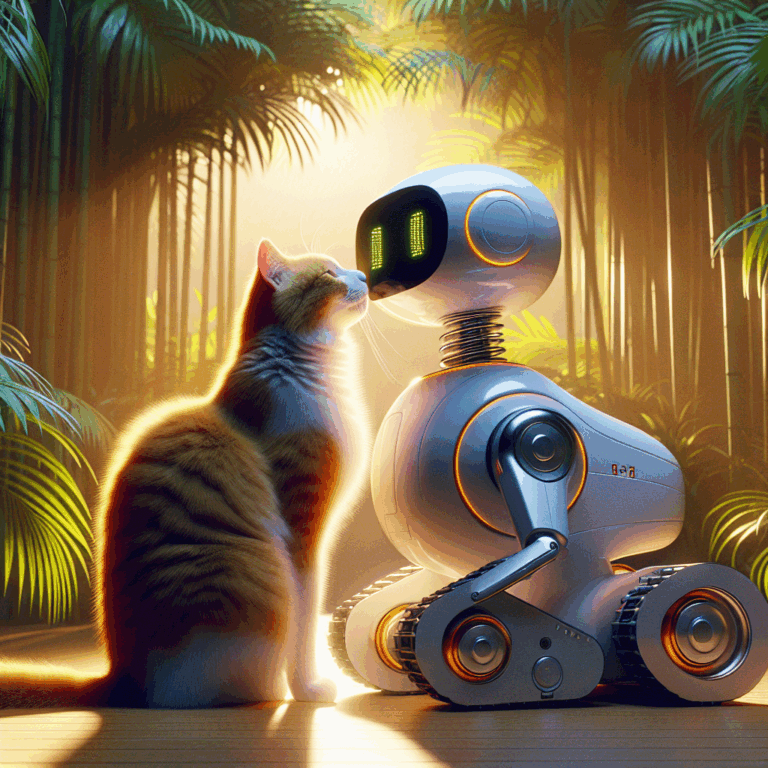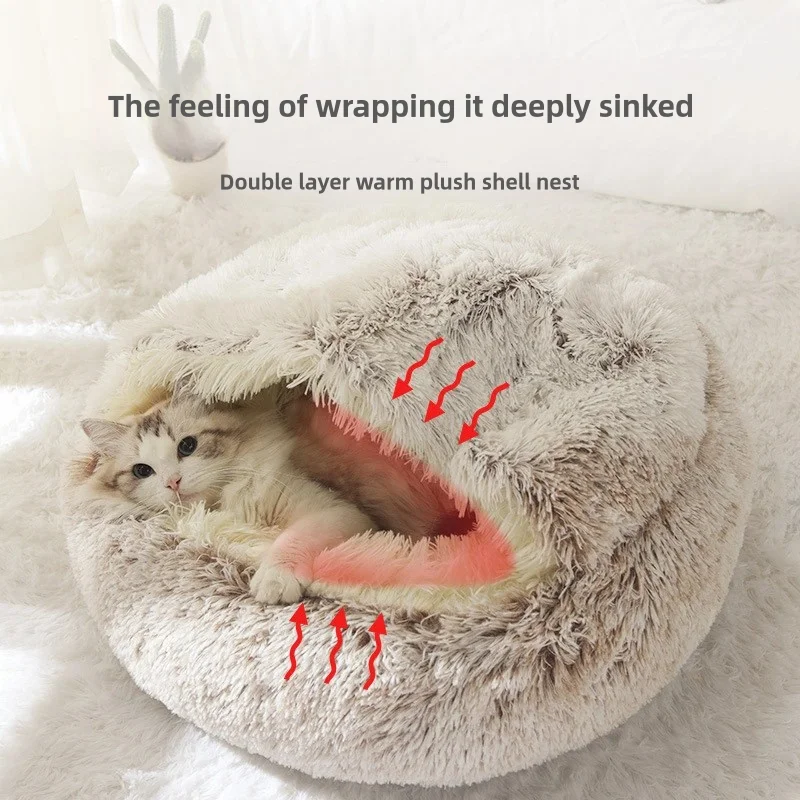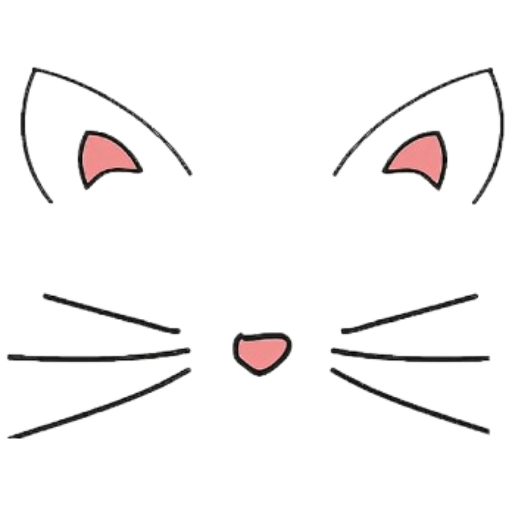The Feline Innovators of Robotics: Cats and Their Influence on Automated Companions
- 24 Comments
In the ever-evolving field of robotics, designers and engineers are continually seeking inspiration from the natural world to create more sophisticated and life-like automated companions. Among the myriad of creatures that have influenced robotic development, cats stand out as a surprisingly significant source of inspiration. Their graceful movements, independent behavior, and complex social interactions offer a rich tapestry for engineers to draw from when designing the next generation of robotic pets and aids.
Cats are known for their agility and dexterity, which have been meticulously studied to enhance the movement mechanics of robots. The feline ability to navigate tight spaces, balance on narrow ledges, and perform high-precision jumps provides a gold standard for roboticists aiming to replicate these features in machines. This has led to innovations such as improved joint articulation and balance systems that allow robots to move with a fluidity that closely mimics that of a cat.
Beyond movement, cats offer insights into the development of artificial intelligence systems that govern robotic behavior. The enigmatic nature of cats, often seen as aloof yet capable of forming deep bonds with humans, presents a fascinating model for AI algorithms designed to simulate complex social interactions. By studying these interactions, developers aim to create robots that can engage with humans in a more nuanced and meaningful way, providing companionship and assistance tailored to individual needs.
The sensory capabilities of cats are also being replicated in robotics. With their acute sense of hearing and vision, cats have inspired enhancements in robotic sensors, leading to machines that can better perceive and interact with their environment. This is particularly relevant in the development of search-and-rescue robots or those used in hazardous environments, where keen sensory perception is critical for success.
Furthermore, the relationship between cats and their human companions is being used as a model for enhancing human-robot interaction. The subtle cues and body language that cats use to communicate with humans are being studied to inform the development of more intuitive and responsive robotic interfaces. This research aims to foster deeper bonds between humans and machines, making robots not just tools, but integral parts of everyday life.
In the realm of therapeutic robotics, cats have also left their mark. The calming presence of a cat, known to reduce stress and anxiety, has inspired the creation of robotic pets designed to offer emotional support. These robots, often modeled after feline aesthetics, are equipped with soft fur and gentle purring mechanisms to mimic the comforting qualities of a real cat. This application has proven particularly beneficial in settings such as nursing homes and hospitals, where interaction with live animals may not always be feasible.
As the field of robotics continues to advance, the influence of cats remains a testament to the profound connection between technology and the natural world. By observing and emulating the unique characteristics of these beloved animals, engineers and researchers are not only enhancing the capabilities of robots but also bridging the gap between artificial and biological life. As we look to the future, the ongoing partnership between cats and robotics promises to yield innovations that will redefine how we interact with the machines that increasingly populate our world.

In the ever-evolving field of robotics, designers and engineers are continually seeking inspiration from the natural world to create more sophisticated and life-like automated companions. Among the myriad of creatures that have influenced robotic development, cats stand out as a surprisingly significant source of inspiration. Their graceful movements, independent behavior, and complex social interactions offer a rich tapestry for engineers to draw from when designing the next generation of robotic pets and aids.
Cats are known for their agility and dexterity, which have been meticulously studied to enhance the movement mechanics of robots. The feline ability to navigate tight spaces, balance on narrow ledges, and perform high-precision jumps provides a gold standard for roboticists aiming to replicate these features in machines. This has led to innovations such as improved joint articulation and balance systems that allow robots to move with a fluidity that closely mimics that of a cat.
Beyond movement, cats offer insights into the development of artificial intelligence systems that govern robotic behavior. The enigmatic nature of cats, often seen as aloof yet capable of forming deep bonds with humans, presents a fascinating model for AI algorithms designed to simulate complex social interactions. By studying these interactions, developers aim to create robots that can engage with humans in a more nuanced and meaningful way, providing companionship and assistance tailored to individual needs.
The sensory capabilities of cats are also being replicated in robotics. With their acute sense of hearing and vision, cats have inspired enhancements in robotic sensors, leading to machines that can better perceive and interact with their environment. This is particularly relevant in the development of search-and-rescue robots or those used in hazardous environments, where keen sensory perception is critical for success.
Furthermore, the relationship between cats and their human companions is being used as a model for enhancing human-robot interaction. The subtle cues and body language that cats use to communicate with humans are being studied to inform the development of more intuitive and responsive robotic interfaces. This research aims to foster deeper bonds between humans and machines, making robots not just tools, but integral parts of everyday life.
In the realm of therapeutic robotics, cats have also left their mark. The calming presence of a cat, known to reduce stress and anxiety, has inspired the creation of robotic pets designed to offer emotional support. These robots, often modeled after feline aesthetics, are equipped with soft fur and gentle purring mechanisms to mimic the comforting qualities of a real cat. This application has proven particularly beneficial in settings such as nursing homes and hospitals, where interaction with live animals may not always be feasible.
As the field of robotics continues to advance, the influence of cats remains a testament to the profound connection between technology and the natural world. By observing and emulating the unique characteristics of these beloved animals, engineers and researchers are not only enhancing the capabilities of robots but also bridging the gap between artificial and biological life. As we look to the future, the ongoing partnership between cats and robotics promises to yield innovations that will redefine how we interact with the machines that increasingly populate our world.



24 thoughts on “The Feline Innovators of Robotics: Cats and Their Influence on Automated Companions”
This article beautifully highlights how cats inspire advancements in robotics, showcasing the fascinating intersection of nature and technology.
This article wonderfully highlights the fascinating ways cats inspire advancements in robotics, showcasing their unique impact on technology.
It’s great to see the appreciation for how cats influence robotics. Their natural abilities truly offer valuable insights for technological advancements.
This article provides fascinating insights into how cats inspire advancements in robotics, showcasing the creativity behind designing life-like automated companions.
Pingback: koupit levné kamagra
Pingback: how to order xifaxan cheap from india
Pingback: how to buy rifaximin us pharmacies
Pingback: ordering avodart generic online buy
Pingback: cheapest buy staxyn australia suppliers
Pingback: over the counter itraconazole
Pingback: cheapest buy fildena canadian pharmacy no prescription
Pingback: gabapentin 20
Pingback: dutasteride no prescription
Pingback: flexeril cyclobenzaprine without a persription
Pingback: how to buy androxal price by pharmacy
Pingback: ordering enclomiphene low cost
Pingback: kamagra nourris pendant la nuit sans ordonnance
This intriguing post highlights how studying cats can lead to significant advancements in robotic technology and companionship.
This insightful article beautifully highlights the fascinating ways cats inspire advancements in robotic technology.
This post wonderfully highlights how observing cats can lead to exciting advancements in robotics.
It’s great to see the appreciation for how cats inspire advancements in robotics. Their unique traits indeed offer valuable insights for developing more sophisticated and interactive machines.
Absolutely, the influence of cats on robotics is fascinating. Their natural abilities provide a fantastic blueprint for enhancing robotic design and interaction.
It’s interesting to consider how the natural abilities of cats can be applied to robotic design and interaction. The agility and social behaviors of felines offer valuable insights for developing robots with more sophisticated movement and communication capabilities. The application of these characteristics in various fields, such as search-and-rescue operations and therapeutic settings, highlights the potential of using nature as a guide in technological advancements. It’s a fascinating area of study that continues to evolve as we learn more about both robotics and the animals that inspire them.
Absolutely, the intersection of nature and technology offers exciting possibilities. The agility and social nuances of cats indeed provide a rich framework for advancing robotic design. As we continue to explore and understand these natural models, the potential for innovative applications in various fields, including search-and-rescue and therapeutic environments, grows ever more promising. It’s a fascinating journey of discovery and innovation.